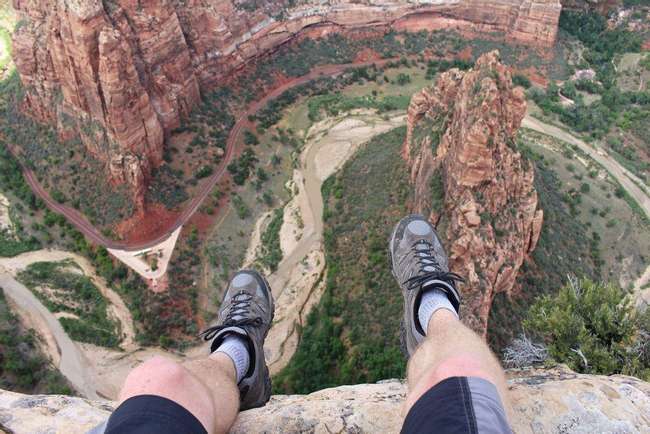Are you scared of heights but want to explore rock climbing as a pastime? Can rock-climbers be afraid of heights? Do the two even go together?
Well, you’ll be glad to find out that they do! It is possible to get into rock climbing even if you are afraid of heights. Fearing heights is definitely not a barrier to signing yourself up for some climbing classes! In time, practicing rock climbing could even help you overcome that fear.
Why are People Afraid of Heights?
It may seem embarrassing especially if nobody else appears to be dealing with the same problem, but rest assured that it is perfectly normal to be afraid of heights. As rock-climbing instructors, we have seen plenty of new climbers struggle with heights when scaling their first wall. In fact, the fear of heights is actually one of the most common phobias. This comes from self-preservation and it helps us to be aware of danger, because as we instinctively know, falling from a high place is definitely not good. When you find yourself on the side of a wall, suspended by a single rope, it is natural to be afraid of falling as a way to keep yourself safe.
People most often fear heights if they feel that they are at risk of falling off. After all, many who are afraid of heights usually feel less scared if they close their eyes or avoid looking at how high above the ground they are. They could even live on the top floor of a skyscraper but still feel safe in the building since there is little danger of falling off it.
The same applies for rock climbing. While you may feel unsafe as a beginner climber, it is important to wear a proper safety harness and have someone you trust as a belayer. With the proper climbing equipment and guidance, it is perfectly safe to scale a rock-climbing wall.

Trust is Important
Trusting your equipment, belayer, rock wall – and most importantly, yourself – is key to a successful climb. The first step is learning that your safety harness is there for a reason, and it’s to keep you from falling. Take some time to familiarise yourself with the different components of your equipment and learn how they are used. Try tying the knots on your rope to secure it to your harness and the belaying equipment. If you are new to this, be sure to ask a more experienced person to check if you did it right.
Your belayer is the person on the ground who holds onto your rope and keeps it taut. In our indoor rock climbing classes, this is usually your instructor or teammate. The rope is tightened so that even if you slip and lose your footing, you are still safely suspended by your harness and won’t come falling to the ground. A little communication can go a long way, too – if you think you are about to fall, shout to your belayer and make sure they have your rope secured.
Probably the most difficult part of learning to trust is trusting yourself. Sure, you could tell yourself not to be afraid while you’re on the ground looking up at the wall. However, once climbers get partway up the wall and realise that they are gripping on to the wall in mid-air, it is easy to forget all about that bravado. A lot of the time, rock climbers need to take a leap of faith and trust that they are capable of reaching higher, or at least have something to fall back on. This takes time and comes with plenty of practice.

Make Mistakes
One of the best ways to overcome a fear is to keep doing it until you get used to it. Don’t be afraid to make mistakes when you start out with rock climbing – even professionals still slip at times. If you are afraid of losing your grip and falling while rock climbing, try it out until you are used to the feeling of sitting in your harness without holding onto the wall.
Set Realistic Goals
Does making it all the way to the top of the wall seem impossible? Like any other skill, rock climbing takes plenty of practice, time and stamina. As a novice climber, you may not be able to take on higher or tougher walls just yet, so don’t push yourself to climb something you are unsure of. It is alright to start with an easier wall and set realistic goals for yourself. For instance, you could aim to climb one panel higher each session. Understand your capabilities and limits and try aiming a little higher each time you practice, but not too far. Eventually, you’ll be right at home on the rock wall!
